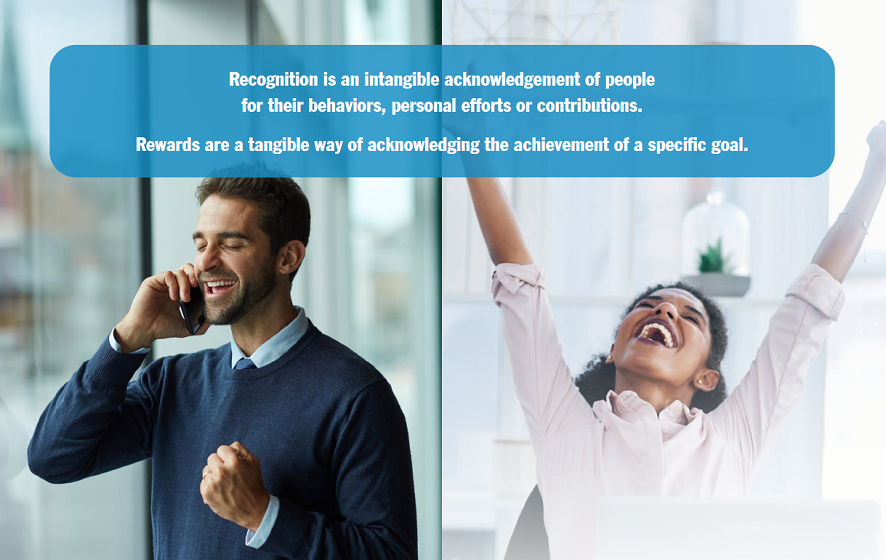Six Ways to Make Remote Recognition More Meaningful
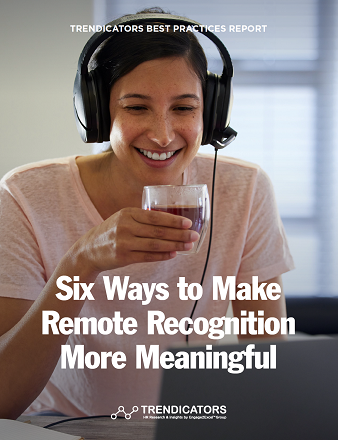
Introduction
Welcome to the first best practices report of 2022 by the Trendicators research division of the Engage2Excel Group. Over the past four years, we have produced more than 50 eBooks and survey reports on topics such as employee engagement, recognition and rewards, performance management, recruiting, onboarding and diversity and inclusion.
This report marks a new direction for our publications. Late last year we convened a Trendicators Advisory Board to help shape the topics and content of our reports. Each quarter, board members will pick a topic, contribute their insights and experiences on that topic via roundtable discussion and participate in editorial review prior to publication.
The ideas and recommendations in this report began to take shape in a roundtable discussion held on February 1, 2022, with advisory board members and subject matter experts from Engage2Excel. To lead off the discussion, Roy Saunderson, Engage2Excel’s Chief Learning Officer, reported that, since the pandemic, two factors have led to the erosion of recognition experiences for remote workers.
Roy observed that: 1) there has been a significant decline in the frequency of interactions between managers and their direct reports, and 2) the absence of in-person interaction has resulted in a deterioration of the quality of engagement between managers and their teams.
This eBook, Six Ways to Make Remote Recognition More Meaningful, offers practical suggestions that any manager can use to address these challenges.
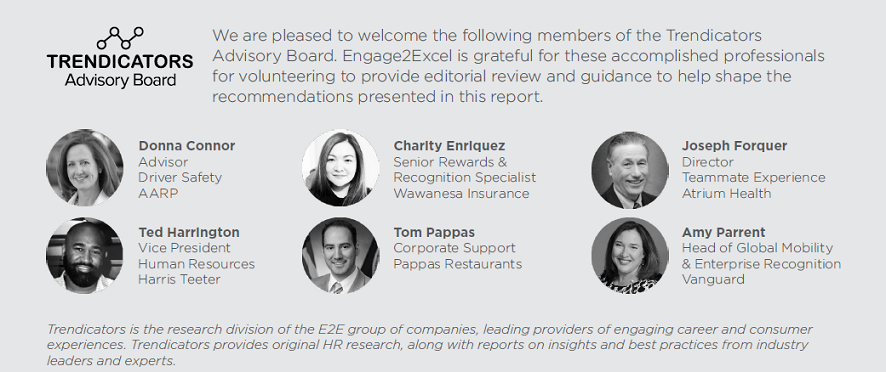
Download
 hbspt.cta.load(123973, 'cc3f2d84-cf37-4ae2-8fdf-c3d6b801efcf', {"useNewLoader":"true","region":"na1"});
hbspt.cta.load(123973, 'cc3f2d84-cf37-4ae2-8fdf-c3d6b801efcf', {"useNewLoader":"true","region":"na1"});
Increase the Frequency of Employee Interactions
Unfortunately, one of the consequences of remote work is that people feel a loss of connection. Although scheduled Zoom meetings and weekly touch-base calls are routine, there are often fewer opportunities for personal interaction between managers and employees in a virtual work environment.
A chance encounter in the hallway or a quick chat in the breakroom offered an organic moment for managers to ask how employees are doing and express their appreciation. Such interactions also created a sense of community and belonging.
In a virtual work environment, managers must be cognizant of scheduling time to engage in more frequent personal interactions with employees.
Increasing the number of planned and spontaneous interactions with employees is a key way for managers to provide more meaningful recognition of remote employees. The more a manager interacts with an employee – whether in person, virtually, by email or through a phone call – the more they will learn about the individual’s personal and work experiences as well as the achievements they are excited about.
The knowledge gleaned from these interactions gives managers a wealth of information for acknowledging both personal and work accomplishments. Through more frequent interactions with staff, managers can seize more opportunities to hear, observe and learn about positive actions or behaviors that merit recognition.

Download
 hbspt.cta.load(123973, 'cc3f2d84-cf37-4ae2-8fdf-c3d6b801efcf', {"useNewLoader":"true","region":"na1"});
hbspt.cta.load(123973, 'cc3f2d84-cf37-4ae2-8fdf-c3d6b801efcf', {"useNewLoader":"true","region":"na1"});
Don’t Confuse Rewards and Recognition
Do the managers in your organization understand the difference between employee recognition and rewards? The two terms have become synonymous for many. Nevertheless, employee recognition and employee rewards are fundamentally different.
To make remote recognition more meaningful, managers need to understand the difference between these two concepts and why they are crucial to improving engagement, motivation and a sense of belonging among remote workers.
Rewards are transactional, while recognition is relational. Failure to distinguish between the two can result in suboptimal experiences for employees and lead to false expectations. Recognition is an intangible acknowledgment of people for their behaviors, personal efforts or contributions, whereas rewards are a tangible way of acknowledging the achievement of a specific goal. However, without recognition from a manager, the emotional impact of a reward is lost.
Download
 hbspt.cta.load(123973, 'cc3f2d84-cf37-4ae2-8fdf-c3d6b801efcf', {"useNewLoader":"true","region":"na1"});
hbspt.cta.load(123973, 'cc3f2d84-cf37-4ae2-8fdf-c3d6b801efcf', {"useNewLoader":"true","region":"na1"});
Improve Remote Engagement Skills
The relationship between managers and their direct reports has undergone severe stress testing over the past two years. Unfortunately, most managers have received little or no training in people management – let alone in remote people management.
Human resources leaders should not assume that managers are well equipped to support remote employees. Every manager needs to reevaluate their role, pivot from supervision to enablement, sharpen their listening skills and develop new routines to help remote employees overcome challenges.
Reevaluate the Managerial Role: Many managers are accustomed to controlling how work is completed. When employees work remotely, that level of control is not possible. Effectively managing remote teams requires a particular skill set. It is vital to understand each direct report’s unique needs and challenges and find new ways to help everyone succeed.
Improve Active Listening Skills: Active listening skills are imperative for one-on-one and group interactions in virtual settings to maximize participation and ensure effective communication. When concerns or challenges are expressed during meetings, managers should summarize and restate them to achieve clarity. Moreover, meetings and attendees will remain focused if cameras are turned on and multi-tasking is prohibited.
Become an Employee Enabler: Research conducted by Dr. Jack Wiley, Engage2Excel’s Chief Scientific Officer, reveals that employees want their managers to “show support and understanding” and consider this a top priority. Fulfilling this desire is more important now than ever before. Employees are feeling anxious and disconnected; with fewer opportunities for on-site interaction, managers need to engage in one-to-one touch-base sessions and ask, “how can I help?”
Focus on Results, Not Processes: Without direct oversight or control over how employees complete their work at home, managers should focus on outcomes and results. Less self-directed employees may need assistance in structuring their work.
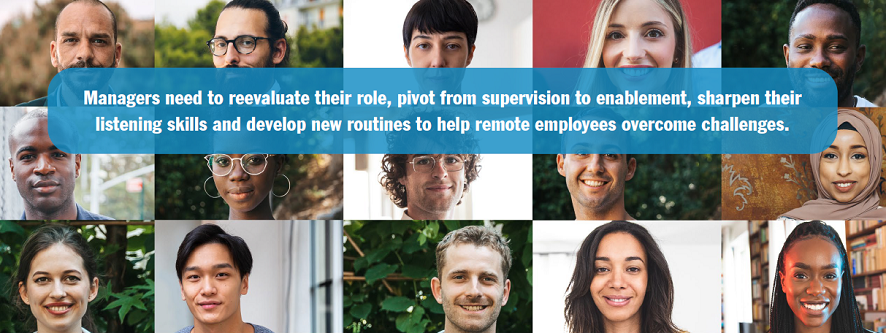
Download
 hbspt.cta.load(123973, 'cc3f2d84-cf37-4ae2-8fdf-c3d6b801efcf', {"useNewLoader":"true","region":"na1"});
hbspt.cta.load(123973, 'cc3f2d84-cf37-4ae2-8fdf-c3d6b801efcf', {"useNewLoader":"true","region":"na1"});
Create a Stronger Sense of Community
When people feel a sense of community at work, they form psychological connections and develop confidence. By working together, they will achieve the tasks, goals and values shared by the group. Now is a great time to harness community spirit and strengthen it through challenges that produce positive outcomes. The ideas below are designed to help build community within workgroups and teams. These suggestions can also be scaled to work for entire departments or organizations.
Managers can transform workgroups and teams into communities of shared interest and support in the following ways:
• Brainstorm ideas for improving a specific, measurable performance variable, such as quality, safety or customer service. Ask each team member to make specific recommendations for improvement.
• Then, implement the best ideas and measure their impact. This shared focus will produce positive outcomes and contribute to a greater sense of community.
• The process described above can also be applied to achieve an organization’s corporate values, such as integrity, fairness or accountability. Discuss proposals for realizing these values in everyday interactions and implement group-sanctioned ideas over 30 days. Then, ask people to report what they have learned.
• Which social causes does your company support? Select one or more causes that resonate with your team. Consider giving employees time off to make a difference, and designate time for individuals to share their personal stories and experiences with the group.
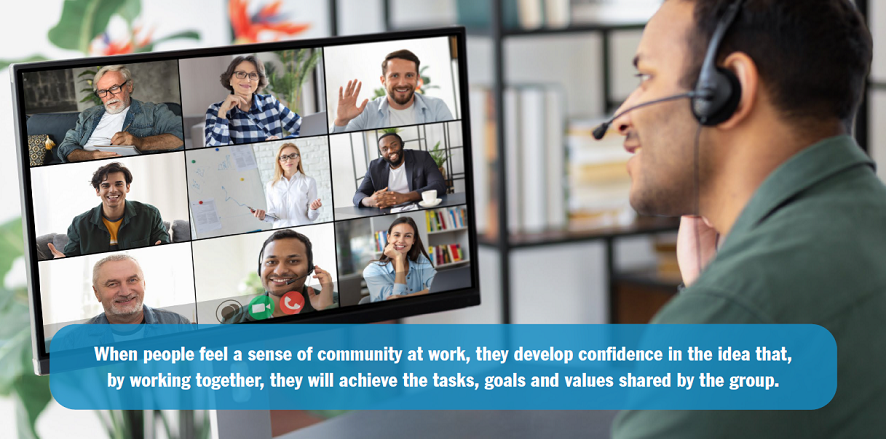
Download
 hbspt.cta.load(123973, 'cc3f2d84-cf37-4ae2-8fdf-c3d6b801efcf', {"useNewLoader":"true","region":"na1"});
hbspt.cta.load(123973, 'cc3f2d84-cf37-4ae2-8fdf-c3d6b801efcf', {"useNewLoader":"true","region":"na1"});
Make Weekly Meetings More Engaging
Working remotely has highlighted the need to make meetings more fun, engaging and personally relevant, requiring rethinking meetings to render them more interactive. We feel more connected when we learn new things about others, share perspectives on individual challenges and take on tasks as a group. Facilitating closer connections through virtual or in-person meetings can improve engagement, foster a shared sense of purpose and support more productive collaboration.
The following techniques can create and nurture closer connections in group meetings:
• Plan the agenda with engagement in mind. Do not turn virtual meetings into a monologue; instead, assign parts of the agenda to different team members and rotate responsibilities regularly.
• Use the chatbox to pose questions that will prompt individuals to share their opinions, personal experiences or accomplishments.
• Build interactivity into your next meeting. Select a topic and ask everyone to come prepared to explain their perspective.
• Conduct a live poll to encourage people to contemplate a topic that affects the entire group. Ask attendees to share their responses with you in private chat sessions, and then present the poll results to the group.
We feel more connected when we learn new things about others, share perspectives on individual challenges and take on tasks as a group.
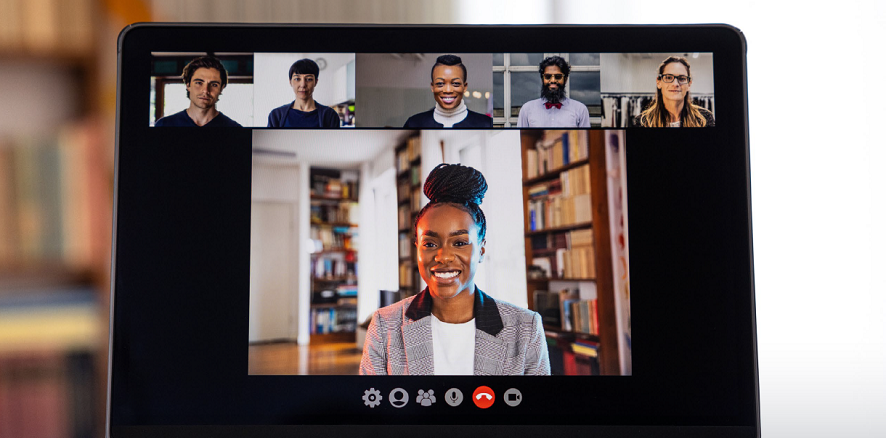
Download
 hbspt.cta.load(123973, 'cc3f2d84-cf37-4ae2-8fdf-c3d6b801efcf', {"useNewLoader":"true","region":"na1"});
hbspt.cta.load(123973, 'cc3f2d84-cf37-4ae2-8fdf-c3d6b801efcf', {"useNewLoader":"true","region":"na1"});
Activate the Senses in Celebrating Milestones
One area that has suffered from the increase in remote work is the celebration of employee milestones and achievements.
Celebrating achievements via a Zoom meeting does not need to be boring. Fun and memorable celebrations require creativity and planning. Managers are responsible for orchestrating celebration events, but they should also engage their teams in the process.
Creating a sense of belonging and valuing individual contributions are essential drivers of employee loyalty and retention.
To make virtual celebrations more meaningful, plan them with the goal of activating the five senses:
Sight: Develop creative signage to display or send to individuals to use.
Hearing: Select meaningful and upbeat music to integrate into presentations.
Touch: Ensure that awards or gifts are shipped well in advance, and create personalized items, such as badges and posters.
Taste and Smell: Send a care package, order takeout for delivery or have everyone make cupcakes or unique cocktails in advance.

The Engage2Excel group of companies creates engaging career and consumer experiences. Its Career Experience Suite (CXS) provides recruitment, onboarding, employee recognition, manager development and employee survey solutions tailored to each organization and designed to help clients find and keep their talent. With over 3,000 client partners, Engage2Excel has a proud heritage of developing innovative solutions that improve competitive advantage and boost bottom-line results.
Download
 hbspt.cta.load(123973, 'cc3f2d84-cf37-4ae2-8fdf-c3d6b801efcf', {"useNewLoader":"true","region":"na1"});
hbspt.cta.load(123973, 'cc3f2d84-cf37-4ae2-8fdf-c3d6b801efcf', {"useNewLoader":"true","region":"na1"});
